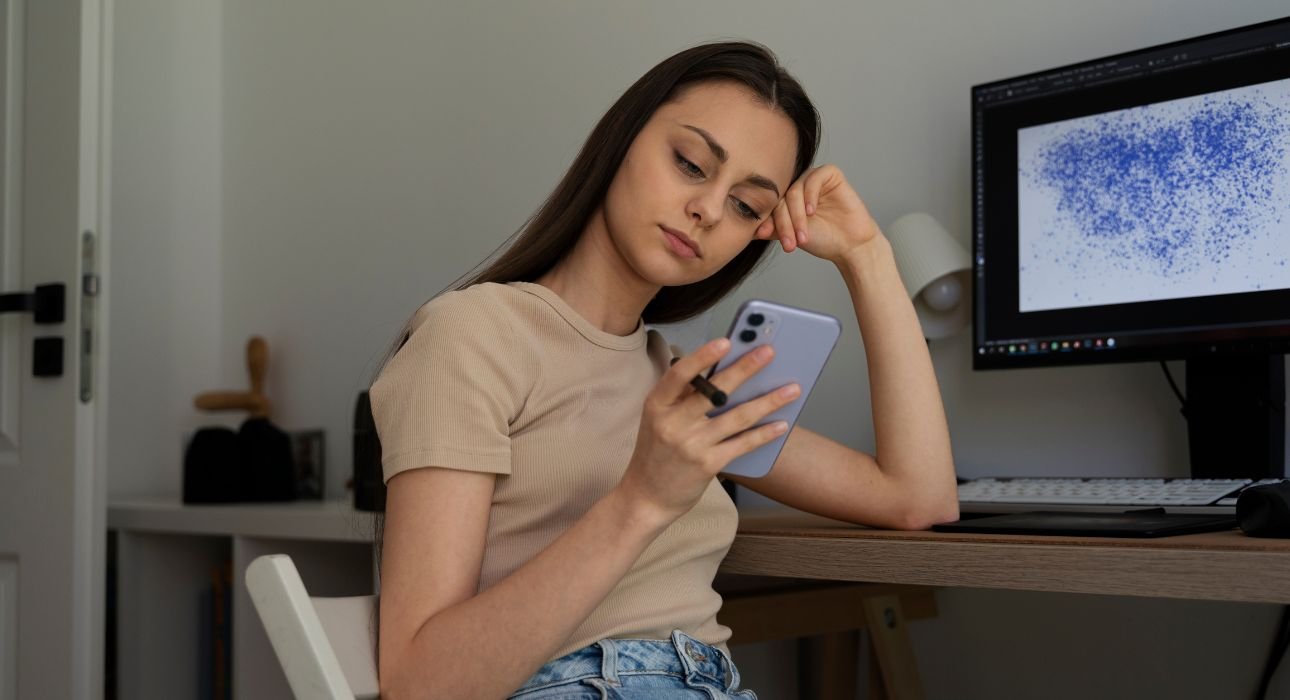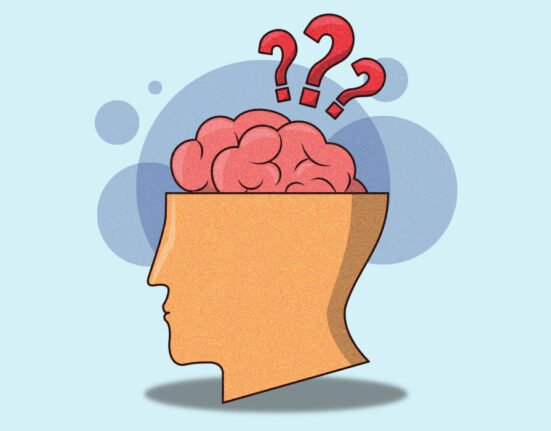“ I couldn’t sleep. My hand continuously kept reaching for the screen, even though I had no signal. It felt like my brain was craving a ping.” That was the common reaction while someone was trying to take a short break from their phone. Smartphones are deeply woven into modern life, but what happens when we are forced to disconnect, even temporarily? Withdrawal from smartphone use is no more discomfort; many of us feel full of anxiety, restlessness, and mental craving, which mirrors neural processes seen in behavioural addiction. Let’s discuss about how our brains respond when smartphones go silent, the symptoms that arise and strategies to rebalance.
Read More: Virtual Autism: Too much screen time is harmful for children
Reward Circuits And The Smartphone
At the core of digital engagement lies the brain’s reward system. Every notification, like, and new message triggers a small surge of dopamine, reinforcing that behaviour and drawing us back repeatedly (Wood, 2021). The brain’s reward system, particularly the frontostriatal circuit, plays a central role in how we interact with smartphones. A study of adolescents with excessive smartphone use found altered connectivity between the orbitofrontal cortex(OFC) and nucleus encumbers (NAcc, two regions involved in reward processing and decision control. (Keim, 2020).
Another fMRI investigation of young adults showed that resting-state networks associated with executive, sensorimotor and visual processing are weakened in those with problematic smartphone or social media use (altered functional brain network in problematic smartphone use (Horvath et al., 2020). These results suggest that overuse may degrade the brain’s ability to regulate attention, integrate sensory input, and exercise cognitive control.
At the macrostate (EEG level), smartphone addiction tendencies correlate with shifts in the duration of certain resting-state brain stress. For instance, withdrawal symptoms are linked to microstates previously associated with emotional networks M(S3) Li et al., 2021). This indicates that even in resting states, the brain of a “ high-use” individual is differently organised.
Read More: What are the effects of smartphones and technology on Children?
Withdrawal in Action: Result of Unplugging
What happens when a regular and habitual phone user is forced offline? Behaviorally and psychologically, smartphone restriction can elicit clear withdrawal symptoms. In an experimental study, participants subjected to 72 hours of smartphone restriction scored significantly higher on the smartphone withdrawal scale (SWS and fear of missing out (FoMO) than controls. (Colombo et al., 2018)
These findings point to distress, craving and emotional discomfort when disconnected. Interestingly, smartphone separation (n taking away access) increases state anxiety, which in turn affects impulsive decision making (Han & Kim, 2022). In environments without the phone, individuals become more likely to make immediate reward choices, possibly because anxiety reduces their ability to weigh long-term consequences.
Qualitative research among Chinese working adults describes classic withdrawal situations; leaving the phone behind, loss of signal, or battery drain triggering dead, restlessness or preoccupation (Zhang et al., 2023). Many report that being away from their smartphone induces emotional turmoil akin to addiction. Thus, unplugging is not just about missing messages but about activating neural discomfort and regulatory disruption.
Long-Term Neural Adaptations
When smartphone use becomes habitual, the architecture of brain connectivity itself may change.
- Reduced connectivity within executive and attention networks (frontoparietal) in heavy users (Horvath et al., 2020).
- White matter structural changes.
A diffusion MRI study in adolescents linked smartphone dependence with increased centrality of the amygdala in the structural framework, graphs, pointing to shifts in emotional regulation pathways (neural correlates of smartphone dependence) (BMC Psychiatry, 2019). Micro state shifts in EEG, as noted, reflect altered temporal dynamics of brain states in users with high withdrawal tendencies. (Li et al., 2021). These alterations suggest that over time, the brain recognises in ways that favour cue response to phone-related stimuli, making it harder to detach.
Read More: Smartphone use may increase heart disease risk: study
Cause and Amplifiers: Persuasive Design
Smartphone apps are not passive tools; they are designed. A mixed-methods study of Chinese university students showed that Persuasive design features ( infinite scroll, notifications, algorithmic reward loops) prolong screen time and reinforce phone-checking habits, making smartphones more addictive. (arXiv, 2021).
Such features directly tap into reward circuits and strengthen behaviour hooks. More recently, intervention studies like mind shift use context-aware, persuasive messaging (recognising boredom, stress, inertia) via large language models to reduce usage and withdrawal symptoms dynamically ( mind shift intervention)(MDPI, 2019). This shows that withdrawal is not just about restraint, it’s about retraining responses to cues.
Healing the Brain: Strategies for Rebalancing
- Internet blocking experiments: A month-long trial blocked mobile internet ( but allowed calls/texts). Participants showed improvements in sustained attention, mental health, and subjective well-being (PubMed, 2023). This suggests that limiting connectivity, not the phone itself, can restore cognitive balance.
- Behavioural Design Interventions: Techniques like InteractOut alter gesture-level input to reduce habitual phone opens. Over weeks, users showed a 15-17% reduction in usage (MDPI, 2019). These interventions show the automaticity of phone use without forbidding it entirely.
- Mindfulness, Self-Control & Lowering Rumination: A significant Research among college students found that higher mindfulness activities reduce smartphone addiction mediated through better self-control and lower rumination. (Cheng et al., 2020).
- Gradual Detox and Controlled Restraint: Short breaks(24-72 hrs) already produce measurable neural shifts(Times of India, 2025). Starting with controlled abstinence and cue reduction ( disabling notifications, grayscale mode) can help.
- Exercise, Social Time, Nature Exposure: Physical activity not only counters withdrawal discomfort but also promotes structural brain resilience. When internet access was removed in the PNAS Nexus study, participants spent more time socialising, exercising and mediated improvements in well-being (PubMed, 2023).
Read More: Mindfulness Meditation has a Positive Effect on Mental Health
Implications and Forward Look
Smartphone Withdrawal is not a psychological weakness; rather, it is a neurobiological response. Our brains adapt to frequent rewards, and removing them triggers anxiety, craving, and attention shifts. Over time, usage may rewrite brain circuits, making detachment harder.
Awareness is key. Recognising withdrawal as a real phenomenon helps reduce shame and stigma. Tools and strategies from technology design, behavioural interventions and mindfulness to enforced breaks offer paths to recovery. As our society continues to digitalise, understanding of neuroscience behind our device dependence is essential, not just for mental health professionals but for every smartphone user seeking balance.
Conclusion
Neuro-psychological studies show that users deprived of their smartphones show an increased state of anxiety and perform more impulsive choices in decision tasks. (Han & Kim, 2022), This suggests that the brain’s stress systems become activated when deprived of habitual digital rewards. Quantitative interviews reinforce these findings:- users describe phone separation as inducing itchiness, preoccupation, mood shifts and intense longing for screen time, akin to withdrawal from cigarettes or caffeine. (Zhang et al., 2023)
In more controlled settings, individuals exhibiting heavy smartphone use show reduced activation in the Frontopolar Cortex during tasks requiring cognitive flexibility under distraction, indicating a compromised capacity to resist compulsion. (Han & Kim, 2022). In essence, understanding the brain’s role in smartphone withdrawal empowers us. It enables individuals, educators, app developers and policymakers to build healthier relationships with technology. As we move forward in a digital era, the goal should not be total disconnection but conscious with our devices and with ourselves too.
References +
- Facebook Addiction Scale. Psychological Reports, 110(2), 501–517. https://doi.org/10.2466/02.09.18.PR0.110.2.501-517
- Elhai, J. D., Dvorak, R. D., Levine, J. C., & Hall, B. J. (2017). Problematic smartphone use: A conceptual overview and systematic review of relations with anxiety and depression psychopathology. Journal of Affective Disorders, 207, 251–259. https://doi.org/10.1016/j.jad.2016.08.030
- He, Q., Turel, O., & Bechara, A. (2017). Brain anatomy alterations associated with Social Networking Site (SNS) addiction. Scientific Reports, 7, 45064. https://doi.org/10.1038/srep45064
- -Montag, C., & Diefenbach, S. (2018). Towards Homo Digitalis: The impact of smartphone use on psychological well-being. Behaviour & Information Technology, 37(1), 1–3. https://doi.org/10.1080/0144929X.2018.1523899
- Turel, O., & Bechara, A. (2016). A triadic neural model of problematic smartphone use: Behavioural addiction, brain function, and social influence. Frontiers in Psychiatry, 7, 1–9. https://doi.org/10.3389/fpsyt.2016.00028
- – Horvath, J., Mundinger, C., Schmitgen, M. M., Wolf, N. D., Sambataro, F., Hirjak, D., & Kubera, K. M. (2020). Structural and functional correlates of smartphone addiction. Addictive Behaviours, 105, 106334. https://doi.org/10.1016/j.addbeh.2020.106334
- Duke, É., & Montag, C. (2017). Smartphone addiction and beyond: Initial insights on an emerging research topic and its relationship to Internet addiction. In G. Musetti et al. (Eds.), Psychology and the Internet: Current Issues and Future Perspectives. Springer.
- Weinstein, A., & Lejoyeux, M. (2010). Internet addiction or excessive internet use. The American Journal of Drug and Alcohol Abuse, 36(5), 277–283. https://doi.org/10.3109/00952990.2010.491880
- Lin, Y. H., Chang, L. R., Lee, Y. H., Tseng, H. W., Kuo, T. B. J., & Chen, S. H. (2014). Development and validation of the Smartphone Addiction Inventory (SPAI). PloS ONE, 9(6), e98312. https://doi.org/10.1371/journal.pone.0098312













Leave feedback about this